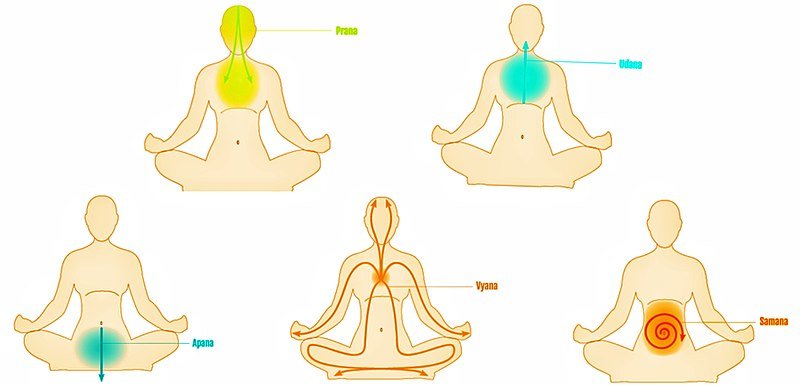Yoga and Ayurveda: Introducing the five pranas
/In the next few weeks, I’d like to turn our attention to the five pranas, also known as the five vāyus. This week we’ll introduce the topic, and in subsequent weeks, we’ll look at each of the five pranas individually.
The five vāyus, also known as the five pranas, are the subdivisions of vata in the body, prāna, udāna, vyāna, samāna and apāna. Vāyu, simply translated, means “wind.” In fact, vata is also known as vayu. The five vāyus are responsible for all kinetic motion in the body. Every meditation practitioner, yoga practitioner, and practitioner of tantra must know and understand the five vāyus in order to successfully work with prāna, or vital life energy. These five vayus are discussed not only in the texts of Ayurveda, but also in yogic and tantric texts like Hatha Yoga Pradīpika and Tantrasāra.
Because they are the subdivisions of vata, let’s take a look at how Charak Samhita describes vata. In this passage he uses the synonym vayu.
“Vayu, when unvitiated, holds up the systems and organs, has five forms--prana, udāna, samāna, vyana and apana, initiates upward and downward movements, leads and controls the mind, employs all sense organs in their activity, carries all sense objects, causes structural formation of all bodily dhatus, promotes union in body, prompts speech, originates touch and sound, is the root of auditory and tactile sense organs, is source of exhilaration and courage, stimulates agni (digestion), absorbs dosas, throws out excreta, makes the gross and subtle channels, shapes the foetus and maintains life span.
The normal vayu, moving about in the nature performs these functions--holding up the earth, kindling of fire, disposing continuous movement of the sun, the moon and groups of stars and planets, making of clouds, raining waters, initiation of streams, producing flowers and fruits, sprouting of plants, demarcation of seasons, division of dhatus, manifesting the measure and shape of dhatus, strengthening of seeds, growth of plants, removing excessive moisture, absorbing and normal transformation.” Charak, sutrasthan ch 12
So as you can see, vata is tremendously important, in fact, there is no life without vata. And it is also important to understand the subdivisions of vata, in order to practice Ayurvedic self-care, yoga asanas and pranayama in a correct and beneficial way. Working properly with kundalini energy requires an understanding of the five vayus as well. And we also need to understand the five vayus in order to work with our sexual energy in a conscious way. We’ll be unfolding this topic in the next few weeks, so stay tuned!
Alakananda Ma M.B., B.S. (Lond.) is an Ayurvedic Doctor (NAMA) and graduate of a top London medical school. She is co-founder of Alandi Ayurveda Clinic and Alandi Ayurveda Gurukula in Boulder Colorado, as well as a spiritual mother, teacher, flower essence maker and storyteller. Alakananda is a well known and highly respected practitioner in the Ayurveda community both nationally and internationally.
Enliven your holistic health! Visit Alakananda Ma in Alandi Ashram’s ayurvedic clinic to support the overall rejuvenation of your body, mind, and spirit. In-person and virtual appointments available. Book now!










